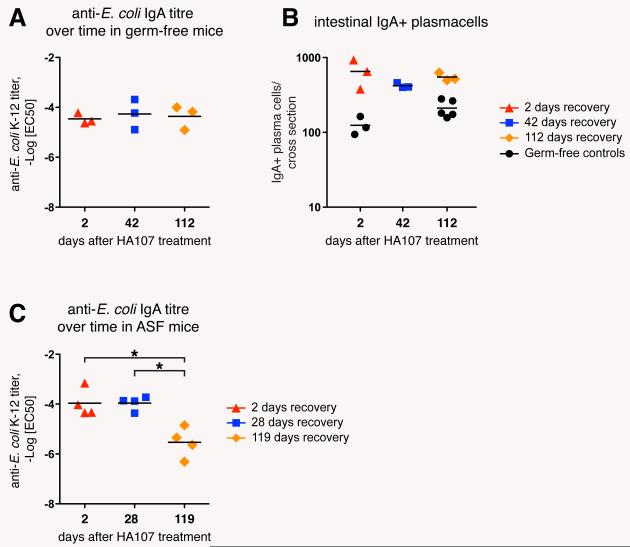Fig. 4.
Commensal-induced specific IgA is long-lived in germ-free mice, but rapidly lost in the face of ongoing IgA induction in microbiota-colonized mice. (A) Germ-free Swiss-Webster mice were gavaged 6 times over 2 weeks with 1010 CFU HA107 and kept germ-free for up to 112 days after discontinuation of HA107 treatment. Intestinal washes taken at the indicated time points were analyzed by IgA specific ELISA and live bacterial flow cytometry, and -LogEC50 values of IgA-E. coli binding were calculated. (B) Tissue sections from the experimental mice described in (A) were stained for mouse IgA to determine the numbers of IgA plasma cells in HA107-treated and germ-free control mice. (C) Colonized mice containing an E. coli-free ASF microbiota were treated as described in (A) and kept under barrier conditions for up to 119 days after discontinuation of HA107 treatment, and analyzed as above at the indicated time points. Bars indicate means; *, statistically significant (p<0.05; 1-way ANOVA). Data points in A and B, respectively in C represent individual mice from one of two independent experiments.

